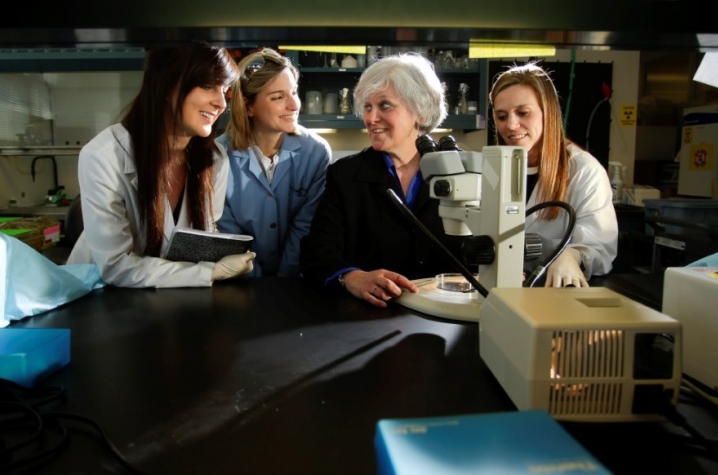Leaders on the Court and in the Lab: The Final Four in Research

LEXINGTON, Ky. (April 2, 2015) – The university communities of Duke, Kentucky, Michigan State and Wisconsin may have basketball foremost on their minds this weekend, but year-round those minds are performing some extraordinary research.
From pioneering the touch screens and weather satellites that we all take for granted to discovering life-saving treatments, these four top-tier research universities perform nearly $3 billion in research and development each year, making them economic engines for their states while boosting the nation’s global competitiveness.
"As our Men’s Basketball team unites the Commonwealth we serve, so, too, does the work of our faculty, staff and students, today and in the future," said University of Kentucky President Eli Capilouto. "A cornerstone of UK’s multi-faceted mission is our research in the humanities, hard sciences, liberal arts and health care that touch all aspects of life, from the cellular to the community level."
"Behind the competition on the hardwood, university researchers go one-on-one with some of the world’s toughest problems every day," Michigan State University President Lou Anna K. Simon said. "The same passion and tenacity that drive teams into the Final Four is also at work in our laboratories, classrooms and in our communities."
"Wisconsin is the proud home of world-changing innovations and discoveries," said University of Wisconsin-Madison Chancellor Rebecca Blank. "Our achievements on the basketball court are more than equaled by our work in the classroom and in our research labs."
"We are proud of our team and their great success this year, which only helps call more attention to the breakthroughs that occur every day at Duke in our understanding of the world around us," said Duke University President Richard H. Brodhead. "It’s like winning the national championship in medicine, technology, behavior, and culture, among others."
INNOVATIONS IN MEDICINE
· Naloxone, a life-saving antidote to heroin overdose, is being developed into a fast-acting nasal spray at the University of Kentucky's College of Pharmacy.
· About half of all prescription drugs in use today target a receptor on the surface of human cells that has been the life work of Duke's Robert Lefkowitz M.D., the 2013 Nobel Prize winner in Chemistry.
· An MSU professor of chemistry developed cisplatin, the world's most widely used and effective anti-cancer drug. Cisplatin is highly effective in fighting a number of cancers, including testicular, ovarian and lung.
· Warfarin, a widely used blood-thinner for treating stroke and heart disease, grew out of a University of Wisconsin investigation into the mysterious death of a calf after it ate spoiled hay.
INNOVATIONS IN PHYSICS AND ENGINEERING
· University of Kentucky researcher Samuel Hurst developed the precursor to the screens used in the iPad and ATMs. It recognized single-touch gestures.
· The first space-based telescope was built by University of Wisconsin-Madison scientists, paving the way for the Hubble Space Telescope.
· MSU is home to the nation's top graduate program in nuclear physics, and with U.S. Department of Energy support is building the $730 million Facility for Rare Isotope Beams to explore the nature of the universe and turn that knowledge into new applications for society.
· Duke physicists are developing and commercializing a host of new ideas around the concept of metamaterials -- engineered surfaces that can redirect light, sound and even physical stresses, leading to powerful new antennas and even a sort of "invisibility cloak."
Learn More about the Final Four of research universities this weekend at #Final4Research
MEDIA CONTACT: Jenny Wells, 859-257-5343; jenny.wells@uky.edu




